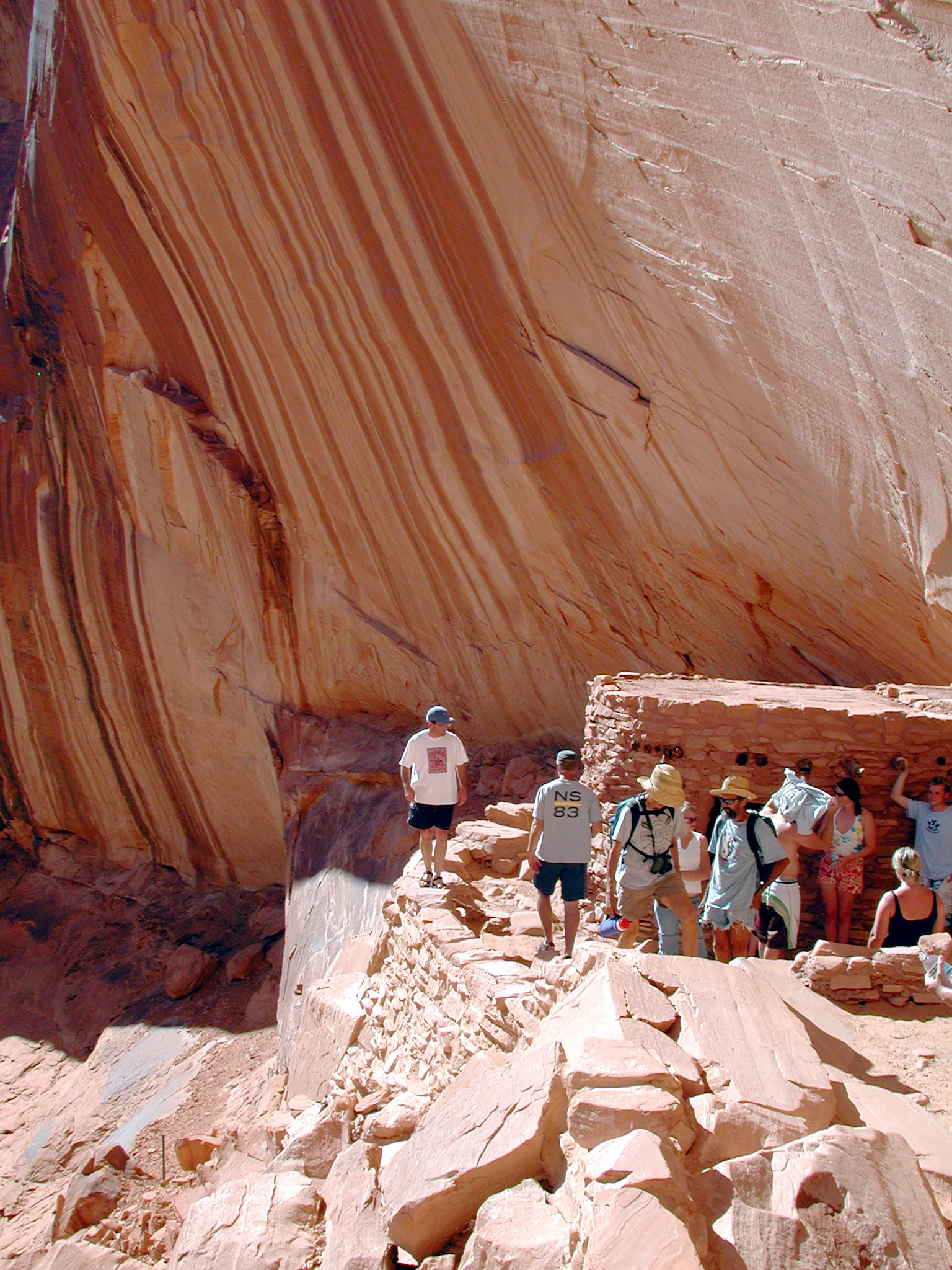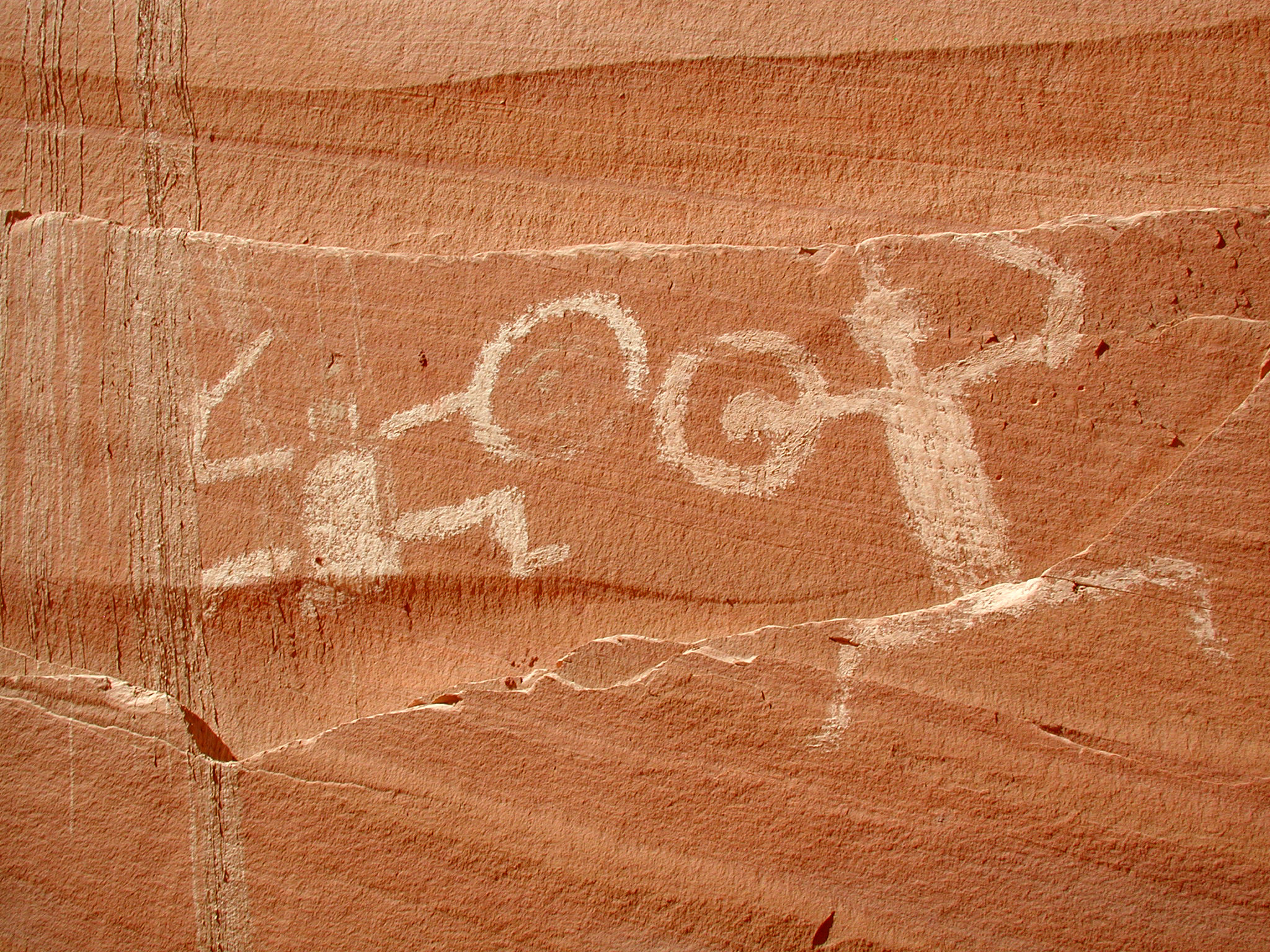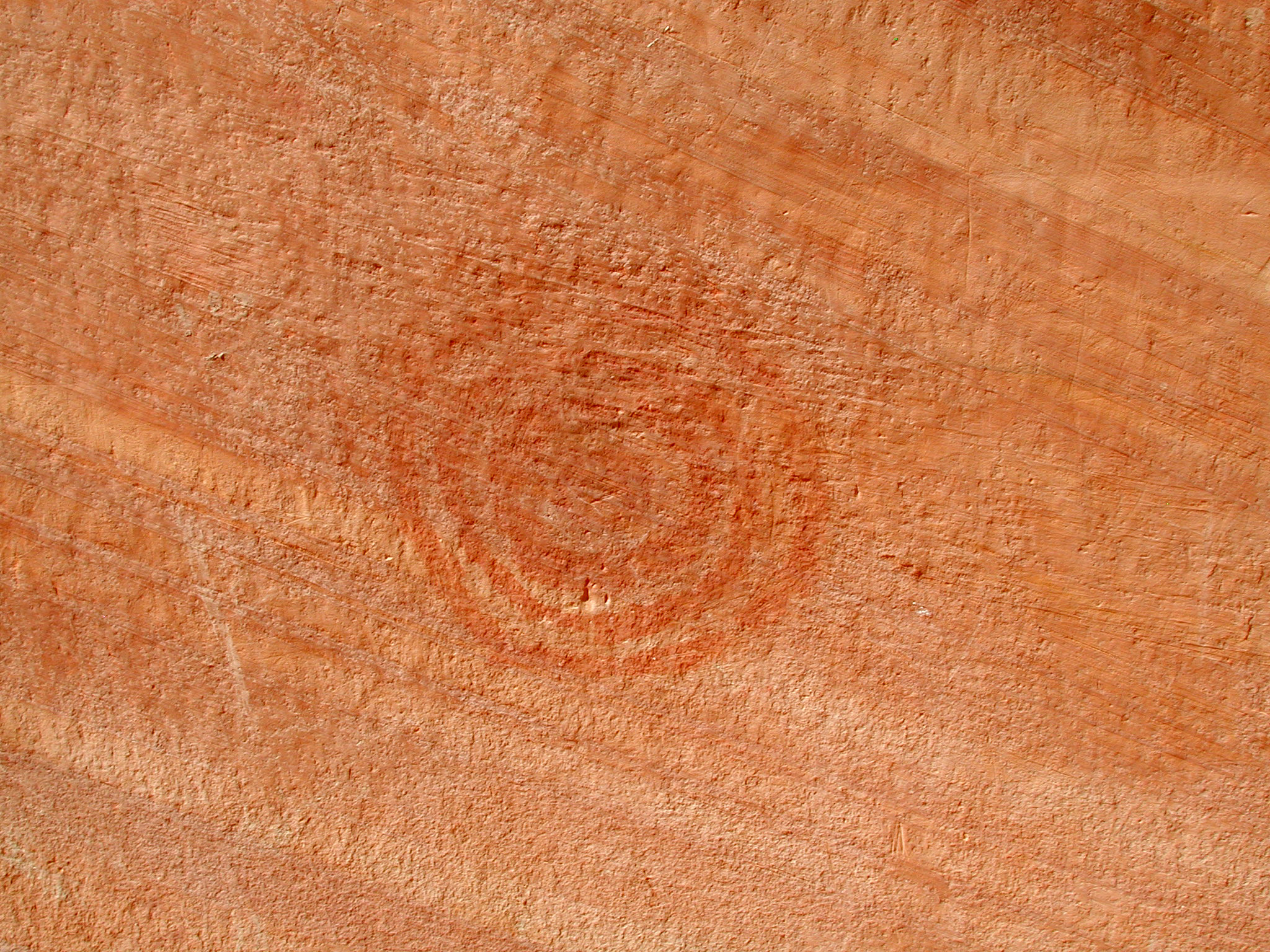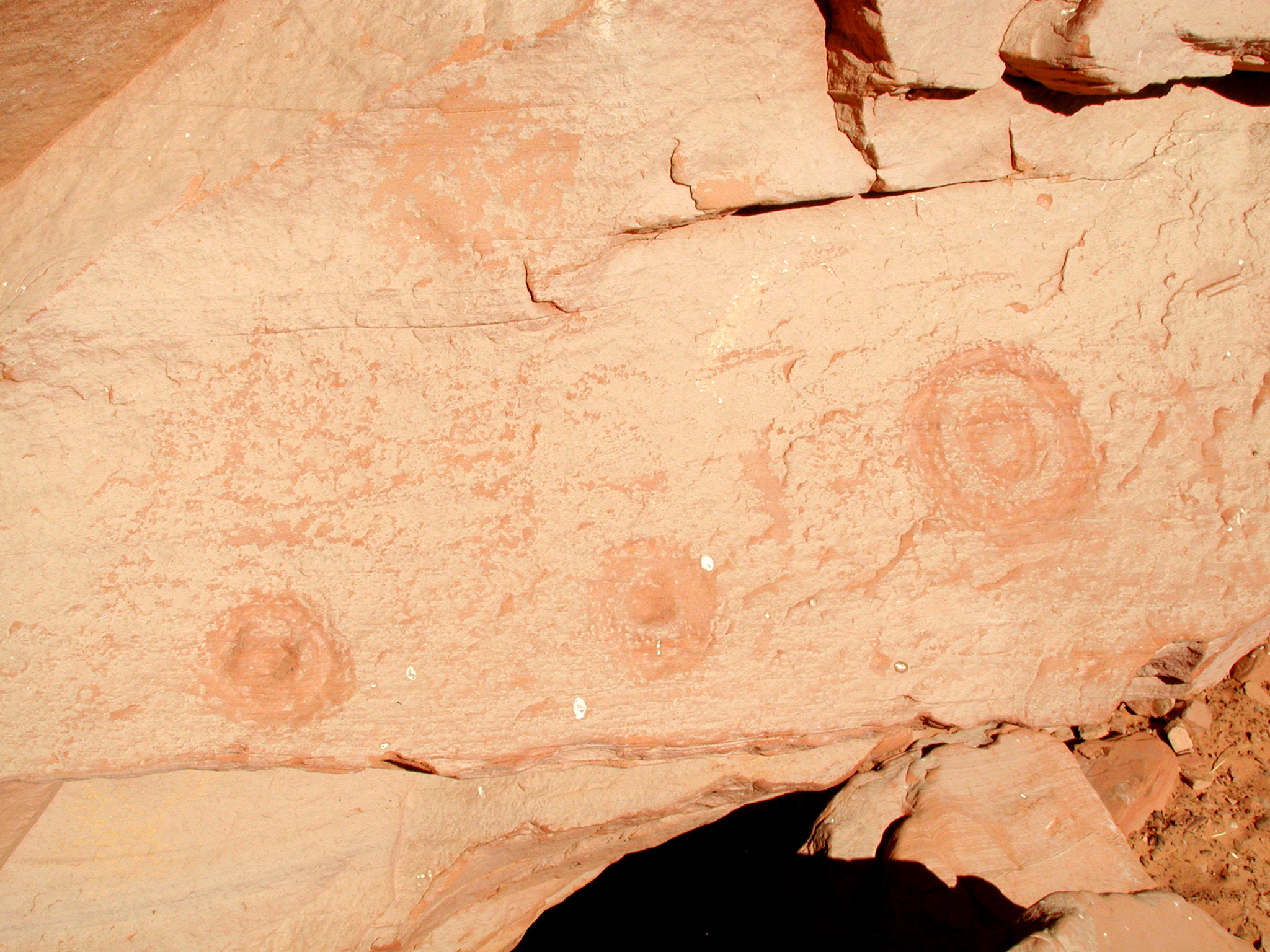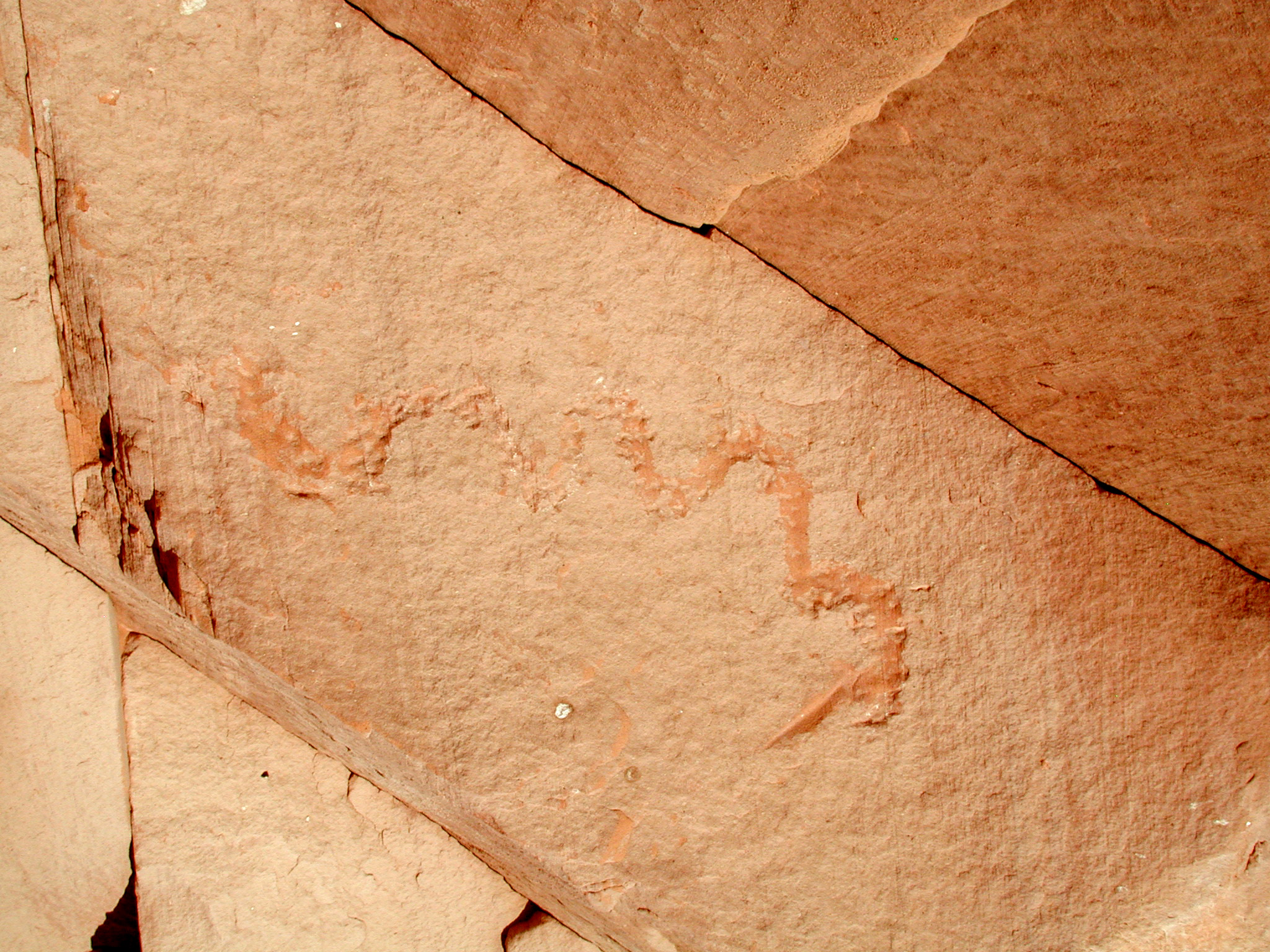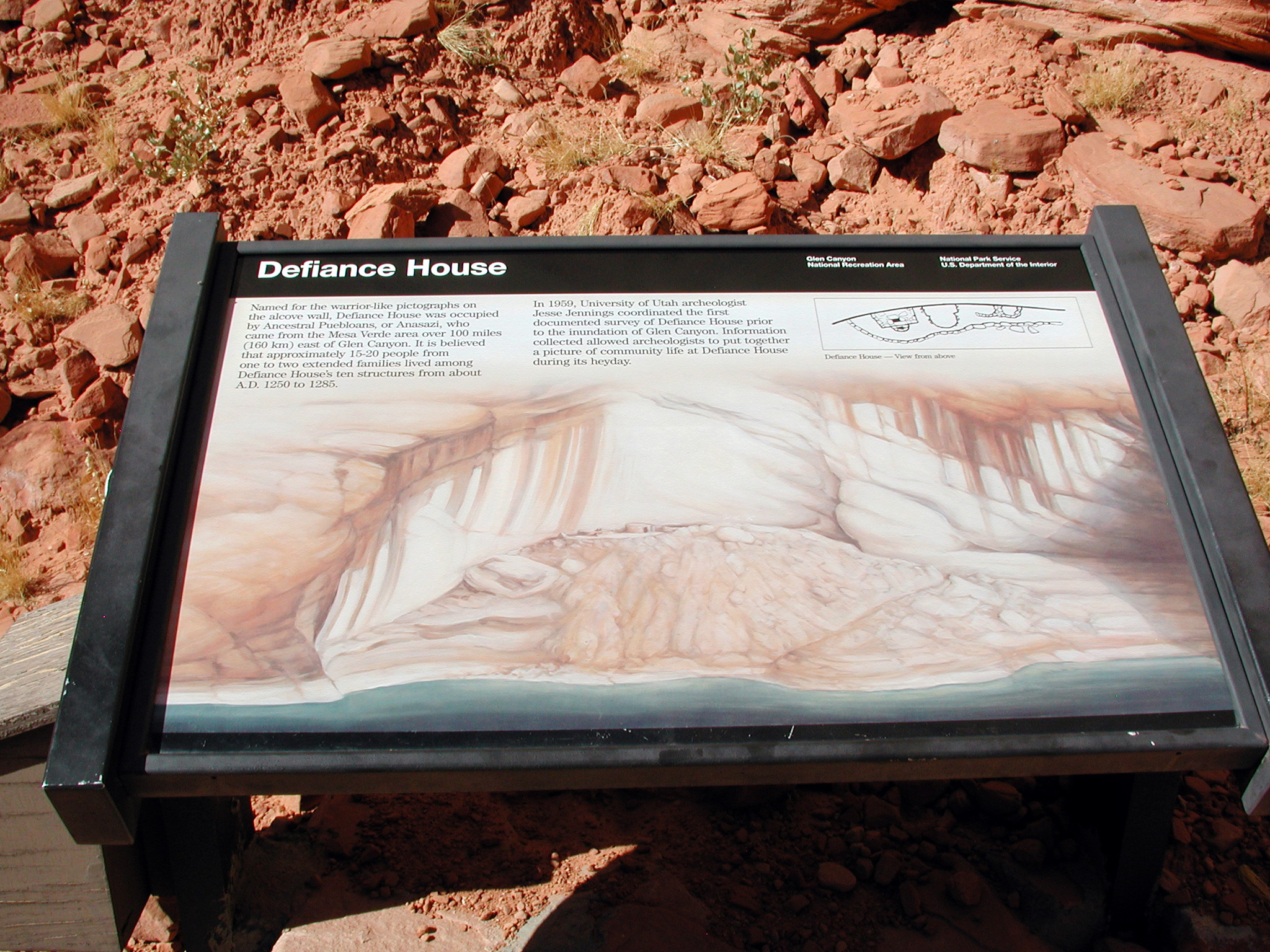Defiance House Ruin
Some 170 million years ago, dinosaurs roamed a flat lowland that was watered by a system of rivers and small lakes. Over the years, bones and footprints from these animals were covered by sediment, which later solidified into rock. In some spots fossils formed, giving us an enduring record of life at that time.
At the same time, extreme forces from within the earth caused the entire area to move upward, creating a high plateau. As the land was lifted up, the constantly flowing river waters carved deep, rugged canyons, including the Grand Canyon and nearby Glen Canyon, now the setting for Lake Powell.
A unique environment was created in the deepening canyons — an environment considered harsh by modern man. For reasons we may never know, an ancient people known as the Anasazi chose to make their homes in these rugged canyons. They built a fascinating civilization that endured for hundreds of years, ending about a thousand years ago.
If you are careful and observant as you play at Lake Powell, you may hear whisperings from the ghosts and spirits of both the huge reptiles and the mysterious humans that ruled, each in their own turn, this intriguing country.
Both dinosaur footprints and Anasazi dwellings have been found in the historic canyons of the lake's Escalante Arm.

Three Roof Ruin
As the lake's level inched higher, the National Park Service used a famous old vessel, "The Ellsie M," on a successful mission to save and preserve the delicate dinosaur footprints.
Today one of the prints can be seen at the Carl Hayden Visitor Center, at the Glen Canyon Dam near Page, Arizona. There is another footprint at the Powell Museum, located in the city of Page. This is not public record, but after much research we believe the fossil footprints were found somewhere near the Esacalante's Explorer Canyon.
Millions of years after the dinosaurs, the Anasazi people prospered in the intoxicating canyons of this spiritual land. The land gave them the essentials for life, and even luxuries that some of us only dream about today. No, they did not know the ways of the world as we see it, but they did have homes surrounded by peace and serenity. They knew how to live off the land and shelter themselves in the cliffs. They had plenty of water and nature's food chain to live in a way that most of us will never know.
I have spent both summers and winters in this country, boating, hiking and exploring. One of my favorite things to do is to try to understand the ways of the ancient ones who lived here before us. I have found that I can feel the most intense presence of their spirits at night in the canyon arms beyond the water's edge. If you can plan it right, a full moon enhances the whole adventure. To heighten the mood, I always bring some of my most prized collection of higher octave music, like Douglas Spotted Eagle "Feather, Stone and Light," or maybe some Coyote Oldman. All of this is Native American flute music that puts me in a state of mind to better understand the spiritual ways of these fascinating people. We can all learn a lot from the early ones who chose to roam this measureless land.
The Escalante has a strong presence of the ancient ones because evidence of their culture still lives on. Most Anasazi sightings require getting off the boat and slapping on a pair of hiking boots. You can find petroglyphs, ruins and carved steps throughout the whole Escalante Arm. The hike beyond the water's edge in Davis Gulch has history written all over it, from both ancient times and more modern cowboy days. I highly recommend this hike, but plan on at least six hours roundtrip if you go all the way to the famous Bement Arch.
Explorer Canyon houses some very unusual petroglyphs beyond the beaver dams and just past Zane Grey Arch. This is also a fun and exciting adventure so plan on about a half-day to soak it all in. Don't forget your camera because this is a part of history you do not see often.
Three Roof Ruin is one of the most spectacular Anasazi sites in Lake Powell country. It is found between Willow Creek and Explorer Canyon in the main Escalante channel. As you travel upriver, keep a close eye out and you will see it high in the cliffs on a big bend off to your port side.
This ancient Anasazi penthouse room-with-a-view housed several families, who carved steps right up the side of a cliff to access their home. The National Park service has restored the ancient wonder. Please leave only footprints and do not change its look. This is the only ruin of its type where you can pull your boat up to the steps and be inside the restored piece of Glen Canyon history in a matter of minutes.
Once you get up there, spend a few moments. Put yourself in their ancient shoes and remember that the lake was not there during Anasazi times. Try to imagine how high up they really were above the canyon floor. The site was chosen for their safety and shelter from Mother Nature's elements, and from other threatening living things.
The Escalante River is often called the most crooked river in the world. This winding, meandering water path also shows evidence of the ancients' presence. Hiking beyond the lake's end you will find exploration and adventure like nowhere else in southern Utah. The river goes on for miles and miles all the way to the small town of Escalante. This is probably the best piece of breathtaking landscape seldom touched by humans in this part of the world. The main reason it remains pristine is because exploration requires a great deal of preparation and energy, with many river crossings and strenuous hiking. But if you are the adventurous type and want to explore nature's wonders, this is the place.
Take yourself back in time and you will get a real understanding of how the early ones preserved, lived and survived in God's own wonderland — now called Lake Powell country.


